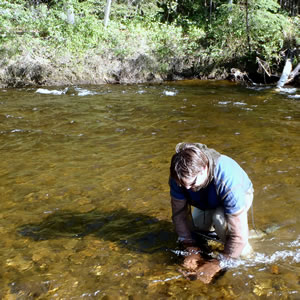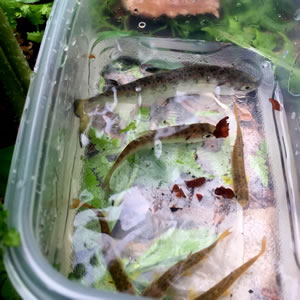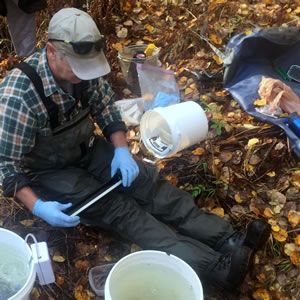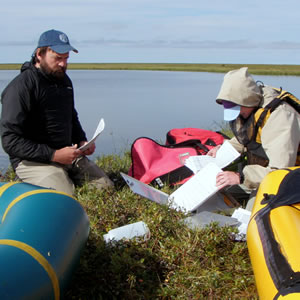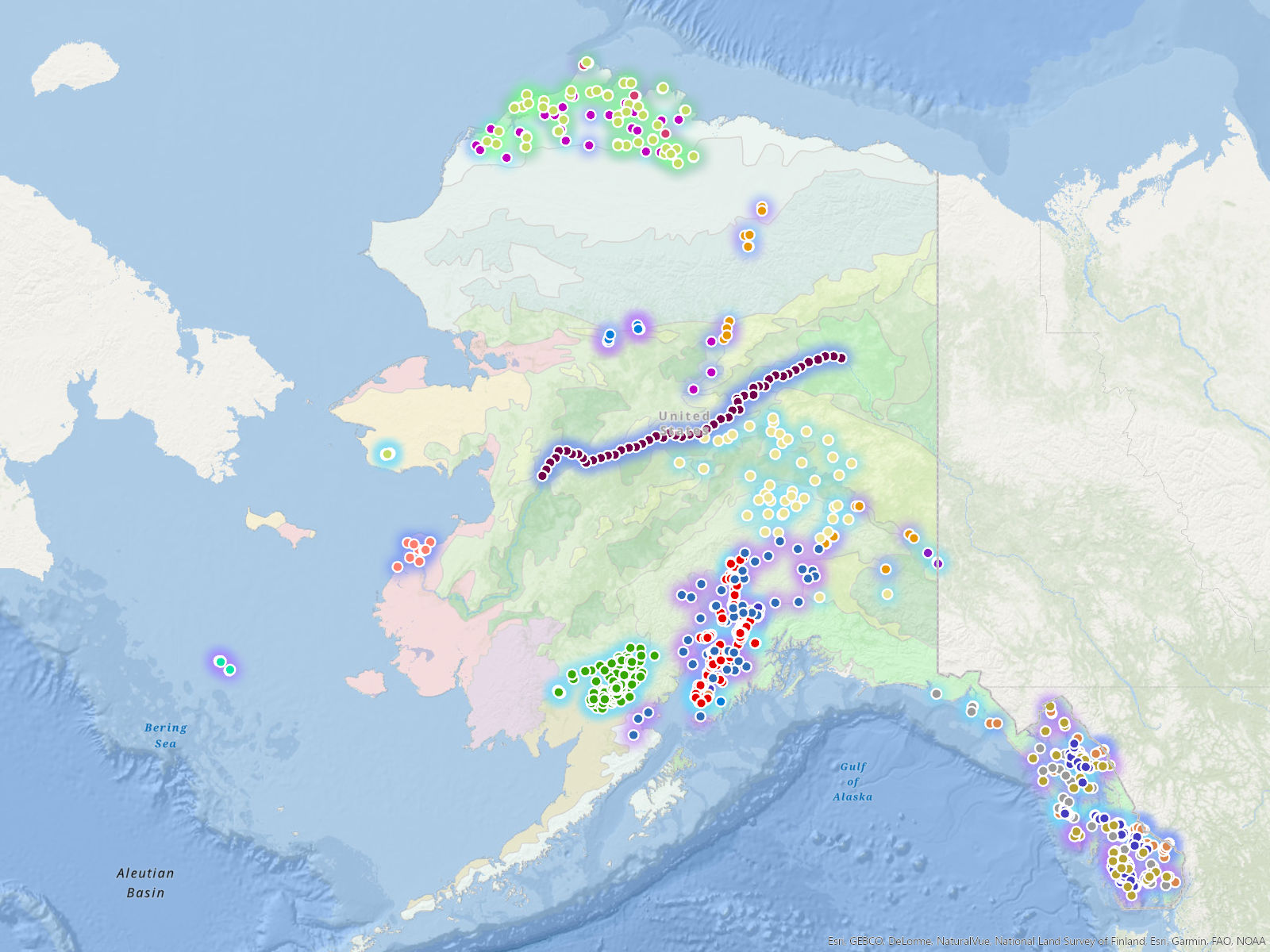The aquatic ecology program studies freshwater, estuarine, and marine ecosystems. Research interests are focused on investigating relationships between water quality, physical habitat, population biology, community ecology, and ecosystem dynamics. Additionally, our Aquatic Ecology lab specializes in monitoring and assessment of Alaska’s waters and diatom and benthic macroinvertebrate processing and identification.
Recent work includes developing a statewide freshwater temperature action plan, modeling stream temperatures, investigating the relationship between temperature and hydrology and their effect on salmon populations; documenting juvenile salmon diets during their freshwater and estuarine life stages, cataloging diversity of stream biological communities, and surveying the spread of freshwater invasive species.
We are also actively involved in characterizing baseline conditions of water quality and physical habitat for freshwater lakes, streams, rivers, and wetlands across the state of Alaska. To this end, our organization hosts the AKTEMP Water Temperature Database. AKTEMP is a cloud-based database platform for storing and accessing stream and lake temperature monitoring data across Alaska.
Research Focal Areas
Aquatic Projects Map
The Aquatic Projects Map allows users to view locations of freshwater macroinvertebrate and diatom sampling across stream, river, lake, and wetland habitats by ACCS staff across Alaska. Metadata information is provided for each sampling site that includes the project name, year(s) of data collection, the waterbody type, and the types of data collected. The macroinvertebrate and diatom fields indicate whether one or both communities were sampled at a site and the collection method used. Other metadata fields document the availability of additional data types, such as physical habitat measurements, in-situ water chemistry, laboratory water chemistry, and stream discharge. For each project, links are also provided to research reports and datasets (when publicly available). Data from these projects are available upon request by contacting Erin Larson.
People
Erin I. Larson, PhD
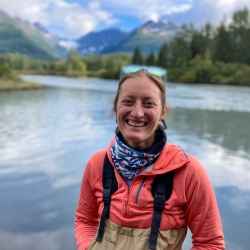
Assistant Director – Lead Aquatic Ecologist | 907-786-6392 | elarson15 (at) alaska.edu
Erin earned her B.A. in Biology with a focus in Ecology at Dartmouth College and her Ph.D. in Ecology and Evolutionary Biology at Cornell University. She served as an Assistant Professor of Environmental Science at Alaska Pacific University before joining the Aquatic Ecology team at ACCS as Research Faculty. Erin is a community and ecosystem ecologist who thinks broadly about the effects of disturbance on community diversity and ecosystem processes in aquatic systems. She has research experience in locations ranging from Ecuador to Colorado to Alaska. In addition to her ecological research program, Erin is invested in expanding opportunities for students to engage in research and in studying effective teaching practices.
Audrey Huff, PhD
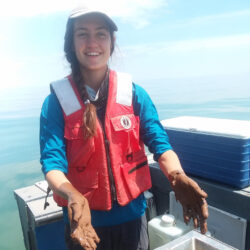
Aquatic Ecologist | 907-786-6384 | aehuff2 (at) alaska.edu
Audrey has a Ph.D. in Water Resources Science (Limnology and Oceanography track) from the University of Minnesota in Duluth, MN and received her B.S. in Environmental Science (Biology focus) from the University of Portland in Oregon. Her research interests include benthic ecology, biogeochemistry, and community ecology, and she has experience doing aquatic field research in the Great Lakes region, arctic and boreal Alaska, and the Sierra Nevadas.
Dustin Merrigan
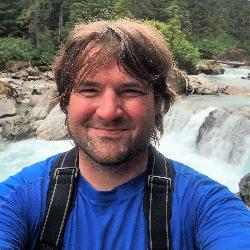
Aquatic Ecologist | 907-786-6979 | dwmerrigan (at) alaska.edu
Dustin has a B.S. in Environmental Sciences from Alaska Pacific University. Dustin’s research interests are surveying and mapping freshwater habitats to examine juvenile coho salmon diets and macroinvertebrate communities. Most of his work involves aquatic invertebrate taxonomy and geographic information systems.
Affiliates
Leslie Jones, PhD, Alaska Department of Natural Resources
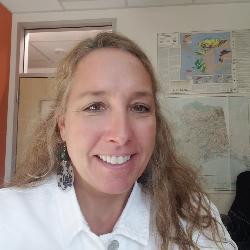
Aquatic Ecologist | 907-269-8833 | leslie.jones2 (at) alaska.gov | 
Leslie received B.S. degrees in Statistics and Environmental Science from North Carolina State University, an M.S. degree in Land Resources and Environmental Science from Montana State University, and a Ph.D. in Systems Ecology from University of Montana. Leslie’s research interests are using computational ecology to understand relationships between climate, biophysical processes, and the landscape. Recent work focuses on how these relationships create suitable freshwater habitat for salmonids and how habitat diversity supports population abundance, productivity, habitat use, and phenology of freshwater organisms.
Dan Bogan, M.S.
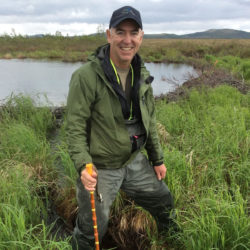
Aquatic Ecologist | 907-786-4964 | dlbogan (at) alaska.edu
Dan Bogan earned a B.A. in Botany and a M.S. in Environmental Science from Miami University. Dan’s research focuses on biological water quality monitoring using diatom and macroinvertebrate community assemblages. He is also actively involved with tribal watershed and water quality education and training programs.

